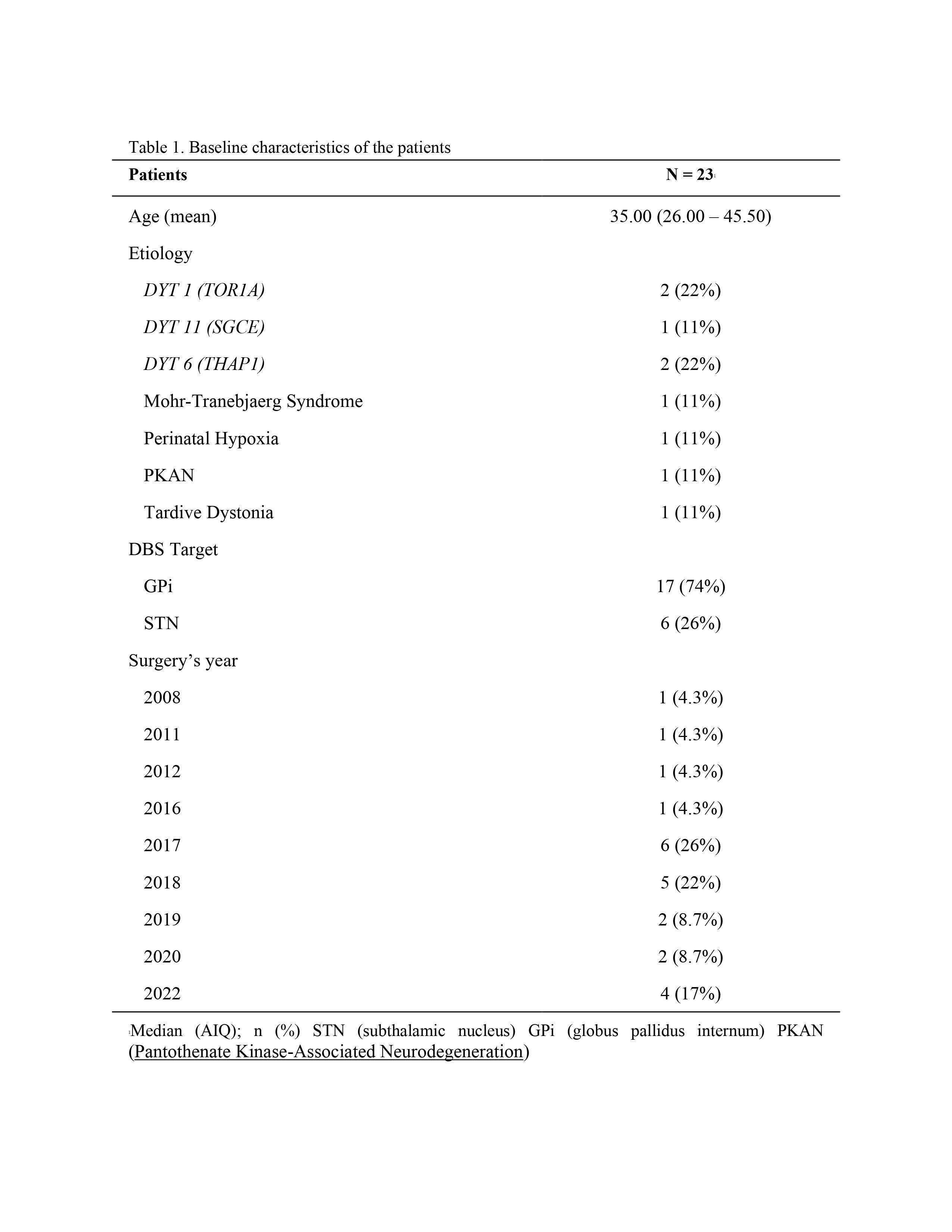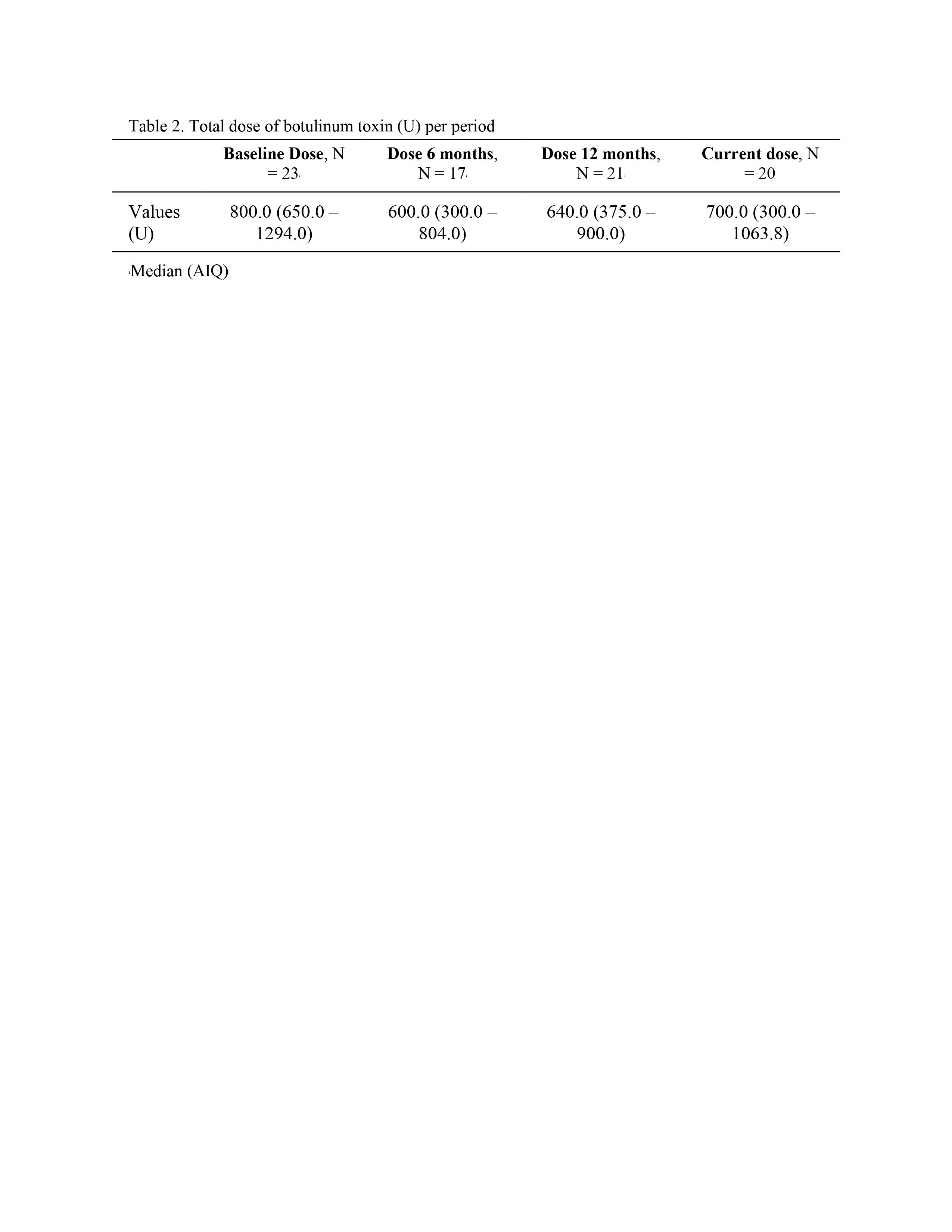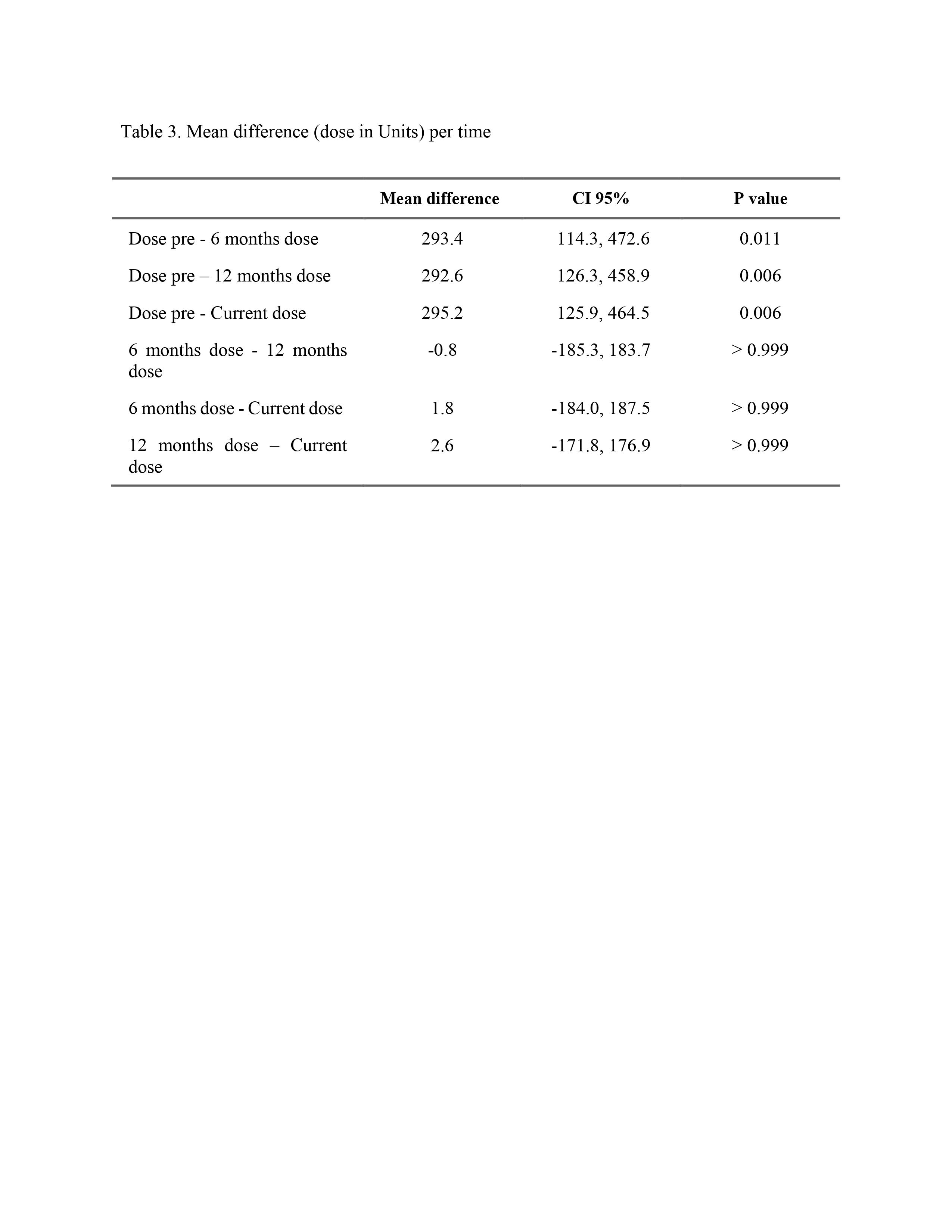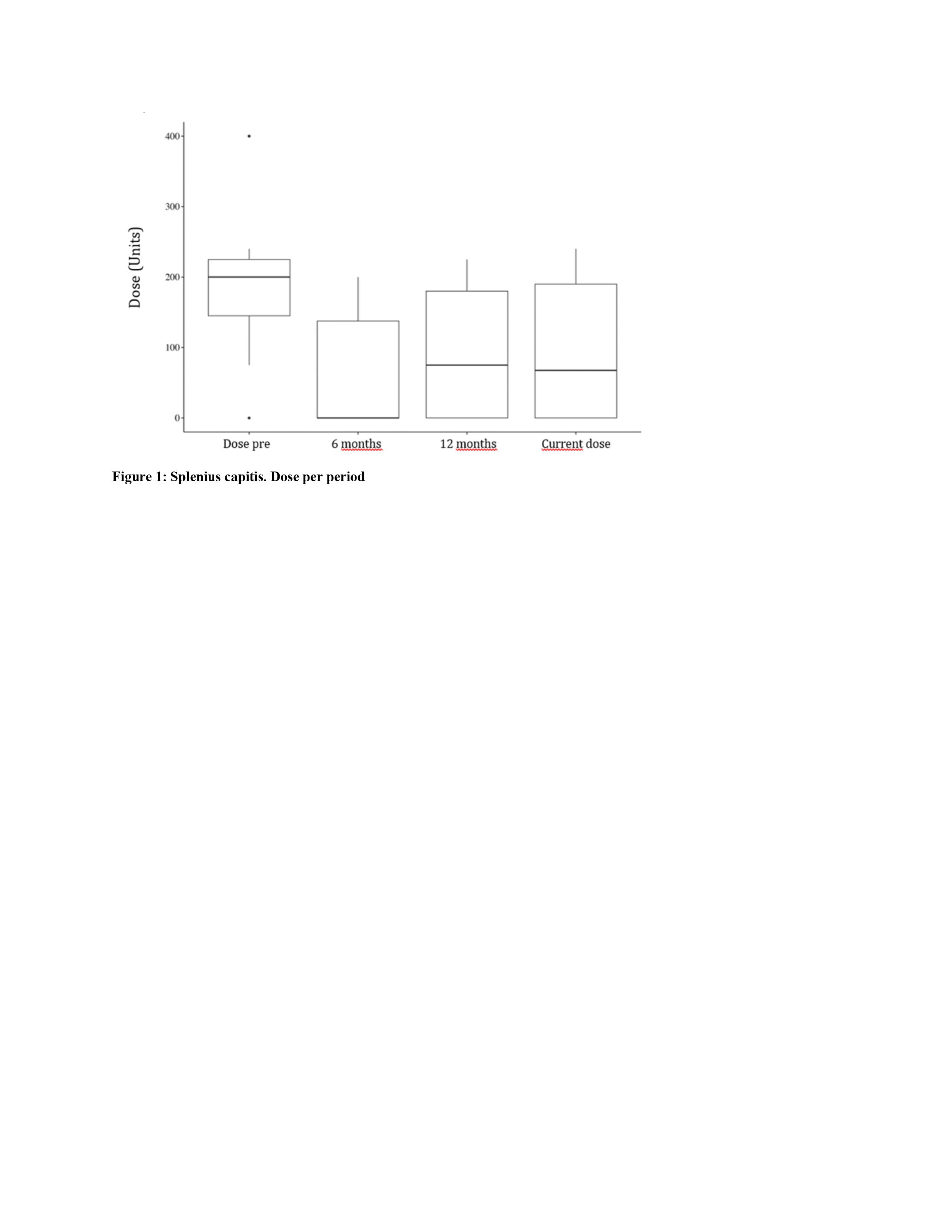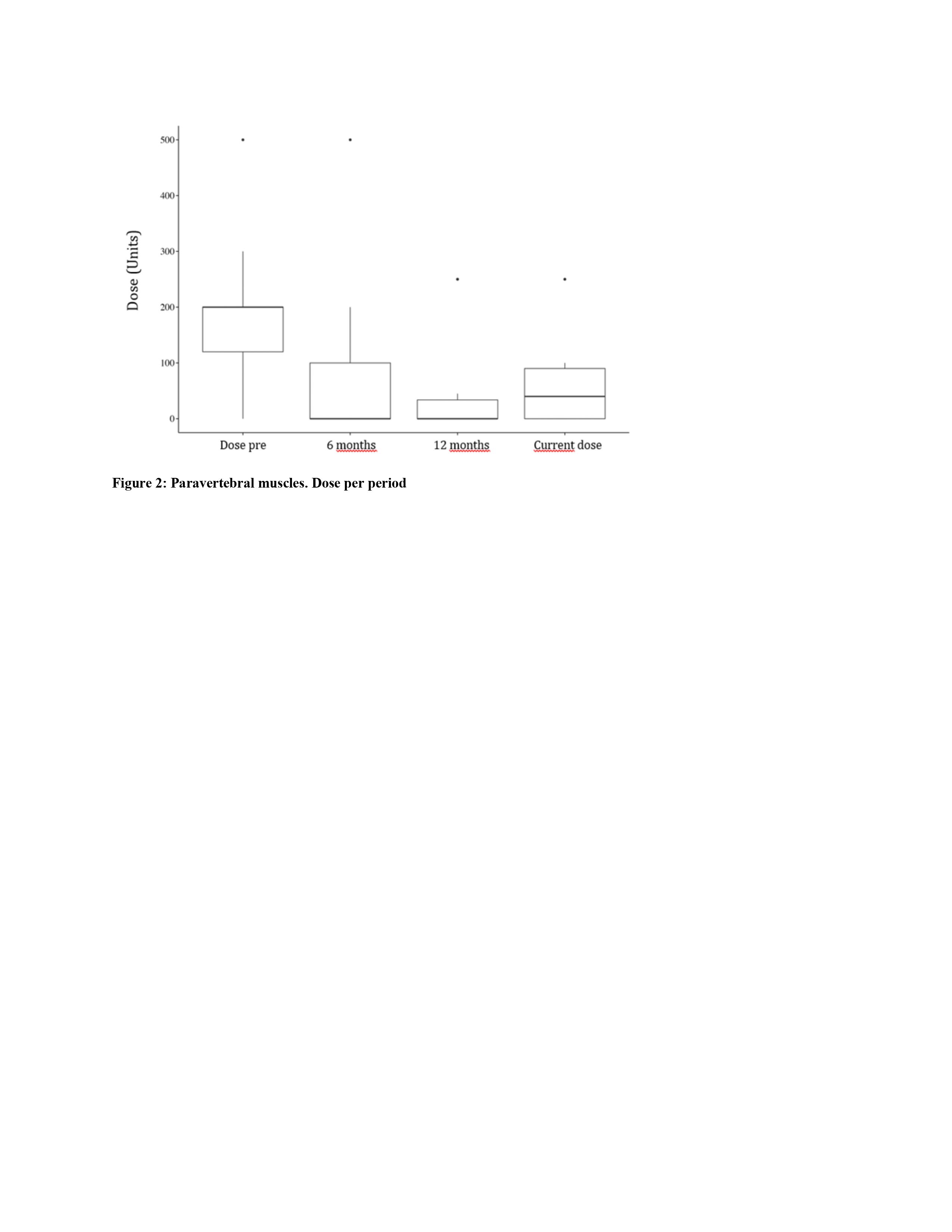Objective: The primary outcome was the relationship between BoNT dosage and DBS surgery in each muscle. A secondary analysis of BoNT dosages through different muscle segments was performed.
Background: Deep Brain Stimulation (DBS) is a recognized treatment for different dystonia subtypes and is recommended after failure of botulinum toxin (BoNT) and other oral medications. However, there are only a few reports comparing the overall impact of surgical treatment in BoNT protocols. This retrospective multicenter chart-review study analyzed pre-and postoperative botulinum toxin protocols in dystonic patients who underwent DBS surgery. Comparative analyses of BoNT treatment before and after surgery were provided.
Method: This was a retrospective study with prospective data collection. The data were collected by reviewing charts at different centers: Hospital das Clínicas da Universidade de São Paulo; Hospital Universitário Cajuru; University Health Network, Toronto Western Hospital; Neurológico de Curitiba; and Hospital Universiário Clementino Fraga Filho. The study included 23 patients diagnosed with generalized dystonia who underwent DBS and received BoNT injections before surgery and at least 1 year after surgery.
Results: The baseline patient characteristics are summarized in Table 1.
As shown in Table 2, the median total dose (median) of BoNT in the preoperative period was 800U (N=23). After surgery, the medians were: 6 months (N=17) 600U; 12 months (N=21) 640U; current dose (N=20) 700U (p=0,05). At the end of the study period, there was a 12,5% reduction in median dosage.
The mean differences between baseline and post-surgery dosages (6 months, 12 months, and current dose) were 293.4, 292.6, and 295.2, respectively. There were no significant differences between the post-surgery doses (p>0.999; Table 3).
We analyzed five muscles individually: the splenius capitis, paravertebral, sternocleidomastoid, semispinalis, and trapezius. There was significant difference in BoNT doses in splenius capitis and paravertebral, as shown in Figure 1 and 2.
Conclusion: In conclusion, despite the limitations, we observed a significant reduction in BoTN doses after DBS surgery. This suggests that these treatments may have a combined effect. In addition, certain body segments (axial muscles, for instance) may have a greater response after DBS.
Further prospective studies could improve our understanding of the role of BoNT combined with DBS in the management of generalized dystonia.
Table 1
Table 2
Table 3
Figure 1
Figure 2
References: 1. Albanese A, Asmus F, Bhatia KP, Elia AE, Elibol B, Filippini G, et al. EFNS guidelines on diagnosis and treatment of primary dystonias: EFNS dystonia guidelines. Eur J Neurol. 2011 Jan;18(1):5–18.
2. Moro E, Gross RE, Krauss JK. What’s new in surgical treatment for dystonia?: Dystonia and Surgical Therapies. Mov Disord. 2013 Jun 15;28(7):1013–20.
3. Meoni S, Fraix V, Castrioto A, Benabid AL, Seigneuret E, Vercueil L, et al. Pallidal deep brain stimulation for dystonia: a long term study. J Neurol Neurosurg Psychiatry. 2017 Nov;88(11):960–7.
4. Dashtipour K, Chen JJ, Espay AJ, Mari Z, Ondo W. OnabotulinumtoxinA and AbobotulinumtoxinA Dose Conversion: A Systematic Literature Review. Mov Disord Clin Pract. 2016 Mar;3(2):109–15.
5. Walker TJ, Dayan SH. Comparison and overview of currently available neurotoxins. J Clin Aesthetic Dermatol. 2014 Feb;7(2):31–9.
6. Maezawa, H., Hirata, M., & Yoshida, K. (2022). Neurophysiological Basis of Deep Brain Stimulation and Botulinum Neurotoxin Injection for Treating Oromandibular Dystonia. Toxins, 14(11), 751. https://doi.org/10.3390/toxins14110751
7. Alterman, R. L., & Filippidis, A. S. (2018). Genetic Subtypes and Deep Brain Stimulation in Dystonia. Movement disorders clinical practice, 5(4), 357–360. https://doi.org/10.1002/mdc3.12660
8. Casagrande, S. C. B., Listik, C., Coelho, D. B., Limongi, J. C. P., Teixeira, L. A., Teixeira, M. J., Barbosa, E. R., & Cury, R. G. (2019). Deep Brain Stimulation in Patients with Isolated Generalized Dystonia Caused by PRKRA Mutation. Movement disorders clinical practice, 6(7), 616–618. https://doi.org/10.1002/mdc3.12811
9. Coenen VA, Rijntjes M, Sajonz B, et al. Bilateral Globus Pallidus Internus Deep Brain Stimulation in a Case of Progressive Dystonia in Mohr-Tranebjaerg Syndrome with Bilateral Cochlear Implants. J Neurol Surg A Cent Eur Neurosurg. 2019;80(1):44-48. doi:10.1055/s-0038-1669472
To cite this abstract in AMA style:
J. Souza, A. Falcone, R. Barbosa, M. Soares, R. Munhoz, M. Farah, T. Capato, S. Casagrande, M. Cordellini, G. Micheli, J. Limongi, E. Barbosa, C. Listik, R. Cury. Botulinum Toxin and Deep Brain Stimulation in Dystonia [abstract]. Mov Disord. 2024; 39 (suppl 1). https://www.mdsabstracts.org/abstract/botulinum-toxin-and-deep-brain-stimulation-in-dystonia/. Accessed December 26, 2025.« Back to 2024 International Congress
MDS Abstracts - https://www.mdsabstracts.org/abstract/botulinum-toxin-and-deep-brain-stimulation-in-dystonia/

